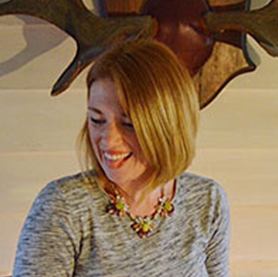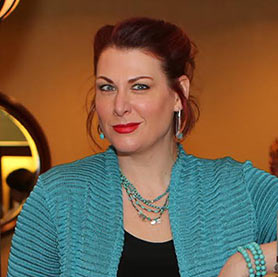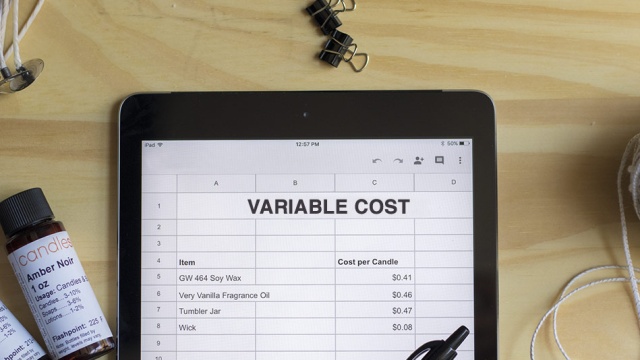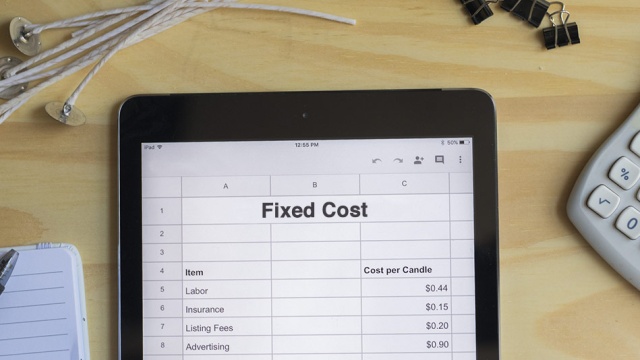How to price your candles
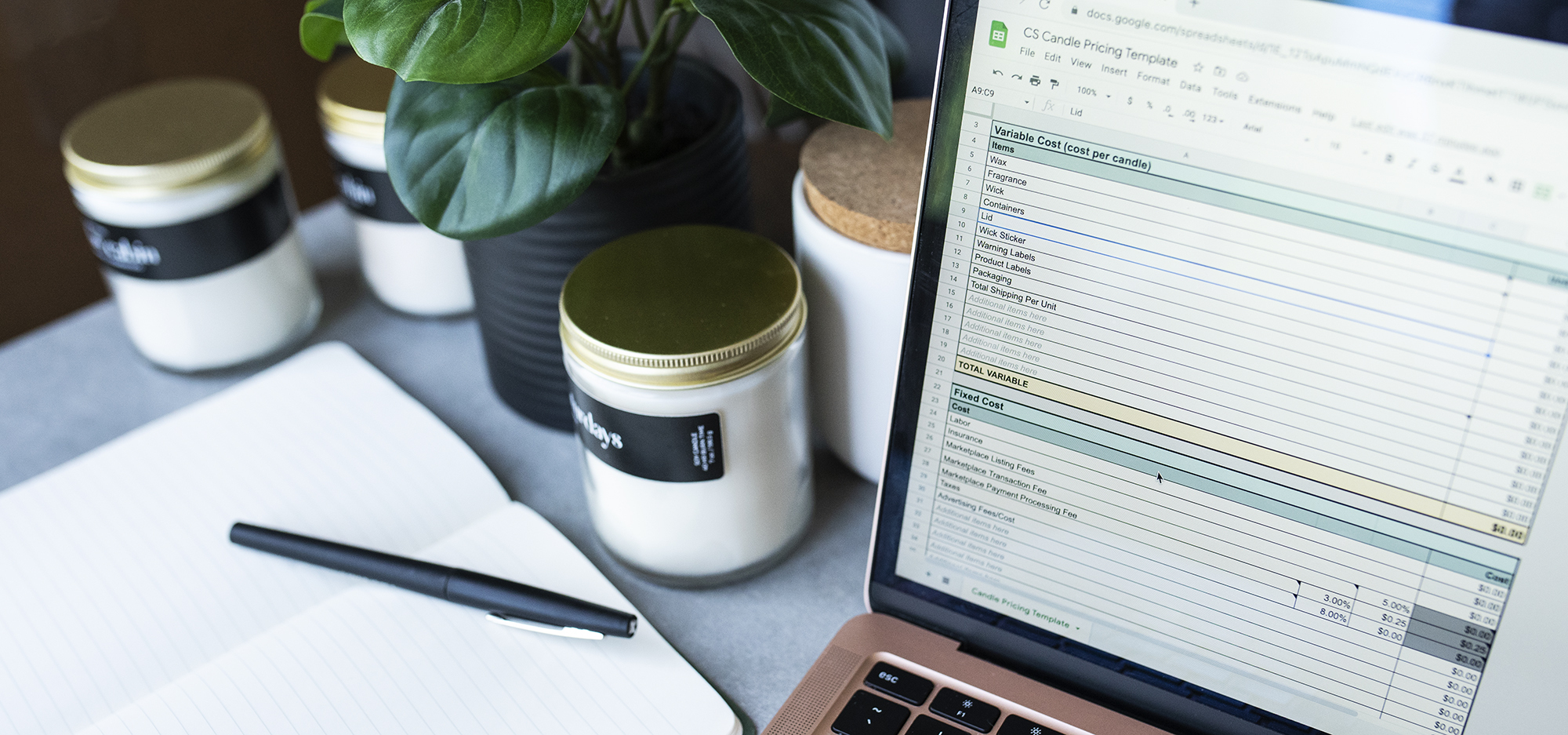
Pricing your products can seem overwhelming, but with a little background info and a little math, you’ll be a pro at pricing your candles—and making a profit!
This article was updated March 2024.
Where to begin?
In our experience, the best approach to pricing is to focus on three things: your costs, target market, and perceived value. Knowing your costs—including supplies, equipment, and overhead—is essential for making a profit and growing your business. Planning around your target market and being aware of your perceived value helps you hit the right price for your customer base.
Understanding your costs: the basics
Before setting prices, you need to know how much each candle costs to produce. Knowing your costs is crucial because even a small miscalculation can make a big difference in your profitability—this isn’t an area you want to estimate!
In this guide, we’ll calculate three types of costs:
- Variable cost: Expenses that vary based on how many candles you make.
- Fixed cost: Expenses that remain constant no matter how many candles you make.
- Total cost: Your variable and fixed costs added together.
Knowing your target market and perceived value
Target market
Your target market is the group of consumers who are most likely to buy your products. They are the customers you envision browsing your social media, website, or walking into your store and purchasing a product. Start by thinking about their age, location, interests, and the price they’d likely pay for a candle. Knowing your target market allows you to cater your branding, messaging, and pricing to that specific group, instead of trying to please every possible customer.
Perceived value
Perceived value—or the value customers place on your brand—is another essential piece of the pricing puzzle. Developing the perceived value of your product and brand is a great way to increase your profit margin and communicate what sets your brand apart. Even if you’re not familiar with the term, almost everyone has experienced making a purchasing decision based on perceived value. Think about buying a car; any car will get you from point A to point B, but maybe you want the experience of a prestige brand. Or, perhaps you prefer a $30 mascara to the $10 drug store option.
Perceived value speaks to the emotions of customers, and often sells the promise of an experience along with the product.
To increase your perceived value, brainstorm about the following:
- What experience does this product deliver? Instead of just listing fragrance notes, spell out the experience the end-user can expect. Maybe they’ll be transported to a tropical island by way of Passionfruit Pineapple, comforted by a familiar bakery scent like Banana Nut Bread, or reminded of relaxing spa days courtesy of your White Tea candle.
- Outline the feelings the end-user will experience because of your product, and be clear about the emotional response someone could expect when using them. Lighting your Peppermint and Eucalyptus candle is a refreshing and invigorating way to start the day, while your Blood Orange candle is a great way to feel vibrant and beat the 2 pm slump.
- Workshop your branding and make sure it aligns with the value you want your customers to perceive from your products. Often, products with a higher perceived value feature minimalist-leaning labels that use modern fonts. It’s always a good idea to ask friends, family, and trusted peers for feedback on your labeling and packaging.
The difference between wholesale and direct sales
Wholesale
Wholesaling your products simply means that you’re selling a larger, guaranteed quantity to a retailer. The retailer serves as a “middleman” who markets and sells the products to their customers. Wholesaling gives you the opportunity to sell a larger quantity of products more predictably, and tap into the customer base that the retailer has already built. However, wholesale products are typically priced a bit lower than direct sale products, meaning that you’ll make slightly lower profits on them. Wholesale products are typically priced at two times their cost.
Direct Sales
The direct sales, or “direct to consumer,” model is where many small businesses start. DTC gives you the ability to build your own unique customer base, forgo the middleman, and collect the highest markup on your products. When starting out, the DTC model can give you invaluable insight into what your customers respond to. Earnings aren’t split with a retailer with this model and you have full control over how you price your products, but keep in mind that this typically requires a bit more groundwork, as you’re not able to rely on the retailer for marketing, shipping, and other services they may provide. Direct sales products are typically priced at three to four times their cost.
You don’t have to pick just one model! Many businesses use both wholesale and direct sales models, but it’s important to understand the difference between them so you can price your products accordingly.
Start by adding up your costs
It’s important to crunch the numbers to know your bottom line. Once you know your costs, you’ll know how to price your products to not only recoup your costs, but to make a profit.
To help out, we’ll use an example. Say you operate a candle business and make batches of 100 soy candles to sell on Etsy using Medium Straight Sided Jars. To arrive at your total cost to produce each candle, you’ll need to calculate your variable and fixed costs.
Step 1. Calculate variable cost
First, we’ll show you how to calculate variable costs for your candles, which is the cost of each component of the candle, plus shipping. Before we start, here are three things to keep in mind:
- Our example includes enough supplies to make a large batch of 100 candles.
- Your own costs can fluctuate depending on the size of your candle and the components you include. In this example, we use one fragrance and a jar that holds 7 oz. of wax and fragrance.
- For quick reference, you can find the cost per pound (or per ounce) on each item's product page.
Step 2. Calculate fixed costs
Different businesses have different types of fixed costs. All businesses have labor and insurance. For this example, we’ve also added listing fees since we’re selling online.
Step 3. Calculate total costs
Combine your variable and fixed costs to find your total costs.
Shipping is not a fixed rate. Many businesses either estimate shipping expenses based on an average cost per order or calculate shipping as a percentage of the total order value. This figure will need to be adjusted as shipping costs change.
Setting your price
Now that you know your actual costs, you can experiment with different pricing levels without worrying about losing money.
- A traditional metric is to charge two times your cost for wholesale orders and three to four times your cost for direct sales.
- Another pricing approach is to use a calculator to set a marginal markup percentage for your candles based on your costs. Generally, a 25% to 50% margin is a good range for a new candle business.
A quick reminder: circle back to your target market
Remember to factor your target market into the equation. For comparison, here are some price ranges we recommend for a 7 oz. candle based on each market type:
- Mass market: $8 to $15
- Mid-market: $16 to $34
- High-end or “prestige”: $35+
If you plan to discount your candles periodically, be sure to also factor those sales into your pricing strategy.
A template to help out
We’ve covered a lot of ground. It’s okay to stop and take a deep breath. When you’re ready to start using this pricing guide for your own candle line, we’ve created a helpful template for calculating your costs.
Candle pricing template: Download Now >
Moving forward: adapt and grow
Congratulations! You’ve just made it through one of the most intimidating parts of building a small business. Hopefully, the process makes a lot more sense now.
Looking to the future, continue to review and adjust your pricing to ensure you’re turning a profit. Never shortchange the quality of your candles by underpricing. Focus on quality and uniqueness more than a low price. You’ve worked hard to create a distinctive product, and consumers are willing to pay for candles that have an engaging brand story tying into product value.
Don’t hesitate to adjust for inflation. The price of gas, food, and other essential everyday items is rising, and it’s likely that the cost of your raw materials is rising as well. Every few months, be sure to update your variable and fixed costs to ensure you’re not losing profits due to sneaking increased costs.
The Takeaways
Here’s a quick recap:
- Before pricing your candles, consider your costs and target market. Don’t try to beat the competition on price alone.
- To calculate your total cost, add your variable and fixed cost. Crunching these numbers helps you appropriately price your candles to make a profit.
- A traditional pricing formula is to charge two times your cost for wholesale orders and three to four times your cost for direct sales. Another approach is to mark up your candles based on a marginal profit percentage.
- Remember to adjust your prices based on your target market and any periodic sales or discounts you offer.
- Believe in the quality of your products and never underprice your candles.

